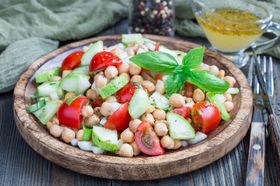Trim Down Answers
Have a question about diet and nutrition, exercise and fitness, or health and vitality? Our nutrition and fitness experts are here to help! We cover everything from menopause to metabolism boosters and beyond.
Recent Answers
Can Diabetics Eat Spicy Food Without Risking High Blood Sugar?
Since diabetics are given so many dietary restrictions, you may be wondering if you can safely eat spicy foods on your diabetic diet. The answer is—yes, you can add spices and enjoy your meals. In fac
Asked a year ago
The Sweet Truth: Can People With Diabetes Eat Fruit?
Although fruits are good for overall health because they contain vitamins, minerals, antioxidants, and fibers, diabetics are often told not to eat fruits because they're sweet and increase blood sugar
Asked a year ago
Can I Still Have Cheese as a Type 1 Diabetic?
The many dietary restrictions for diabetics can make it confusing to know what you're allowed to eat and what food choices aren't safe. If your question is "Am I allowed to eat cheese if I am diabetic
Asked a year ago
How to Easily Count Carbs as a Diabetic
Counting carbs helps diabetics manage their blood sugar levels better. It offers several advantages, including facilitating weight loss and improving your quality of life. This in turn can prevent or
Asked a year ago
Here's Why You're Only Gaining Weight in Your Stomach Area
There are many reasons why people gain belly fat. Genetics plays a major role in where you store excess body fat. While some people are lucky enough to get voluptuous figures with the fat being distri
Asked a year ago
Related Articles
Recent Posts
Anju Mobin
Does Creatine Burn Belly Fat?
Healthy Living With TDC
Stay motivated to eat right & exercise with these tips, tools, & techniques
We don't email often. Unsubscribe anytime.




